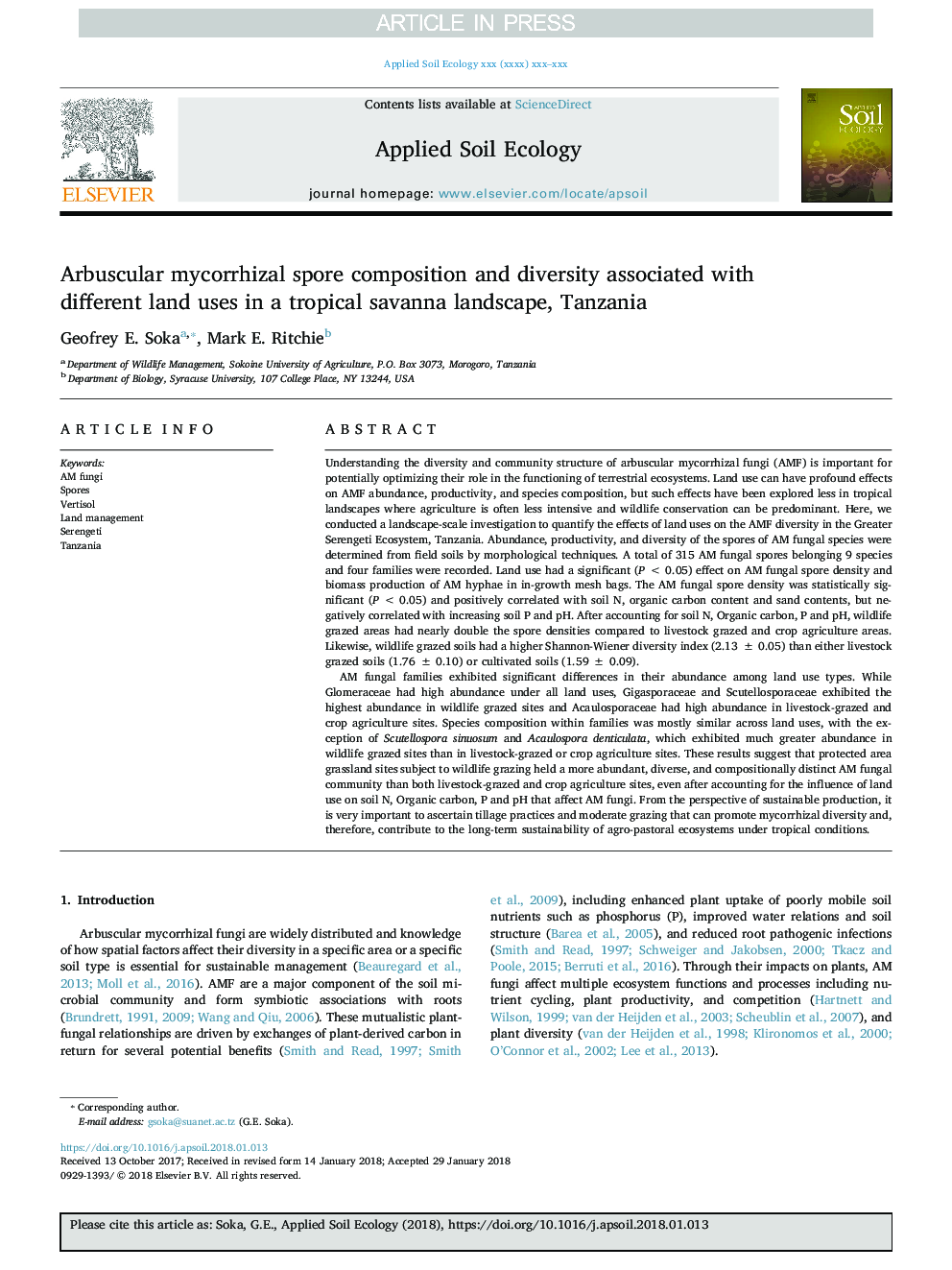| Article ID | Journal | Published Year | Pages | File Type |
|---|---|---|---|---|
| 8846725 | Applied Soil Ecology | 2018 | 11 Pages |
Abstract
AM fungal families exhibited significant differences in their abundance among land use types. While Glomeraceae had high abundance under all land uses, Gigasporaceae and Scutellosporaceae exhibited the highest abundance in wildlife grazed sites and Acaulosporaceae had high abundance in livestock-grazed and crop agriculture sites. Species composition within families was mostly similar across land uses, with the exception of Scutellospora sinuosum and Acaulospora denticulata, which exhibited much greater abundance in wildlife grazed sites than in livestock-grazed or crop agriculture sites. These results suggest that protected area grassland sites subject to wildlife grazing held a more abundant, diverse, and compositionally distinct AM fungal community than both livestock-grazed and crop agriculture sites, even after accounting for the influence of land use on soil N, Organic carbon, P and pH that affect AM fungi. From the perspective of sustainable production, it is very important to ascertain tillage practices and moderate grazing that can promote mycorrhizal diversity and, therefore, contribute to the long-term sustainability of agro-pastoral ecosystems under tropical conditions.
Related Topics
Life Sciences
Agricultural and Biological Sciences
Ecology, Evolution, Behavior and Systematics
Authors
Geofrey E. Soka, Mark E. Ritchie,
